How Long Will It Take Before a Sanitary Landfill Stops Producing Landfill Gas?
Researchers in landfill gas management who have observed landfill gas generation rates in modern sanitary landfills, and how these vary with time, suggest that:
- Landfill gas generation rates increase very rapidly after the onset of gas generation (known as methanogenesis), in a cell and a landfill overall and generally reach their peak at around the time that the waste cell or landfill is completed and capped
- The gas production rate often then reduces by 20% to 30% over the next 10 years, and by 20 years after closure will be no more than half the peak flow rate
- The “rate of reduction of flow rate” will tend to reduce from about year 20 after cell or site closure onward
- The rate of reduction in landfill gas generation will show a half-life effect as it reduces. In other words the rate at which the flow reduces slows down over successive time periods by a set factor. That means that although the rate of reduction continually reduces, and although the flow will tend to move toward zero, it will take a very long time to reach zero.
The Landfill Gas Management Industry Will be Around for a Long Time!
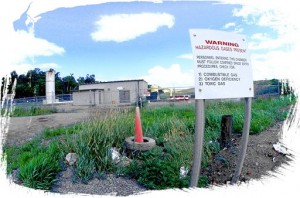 A long term future for the Landfill Gas Management Industry is assured.
A long term future for the Landfill Gas Management Industry is assured.
Most landfill gas management researchers have confirmed that a small amount of landfill gas formation is estimated to remain up to 100 years, after a site or cell has accepted waste. Some researchers have gone further and said that large sanitary landfills are unlikely to cease gassing methane altogether, for many hundreds of years.
Figure 1 as below, schematically illustrates the quantity of methane emissions released during the operational and in the “aftercare phases”.
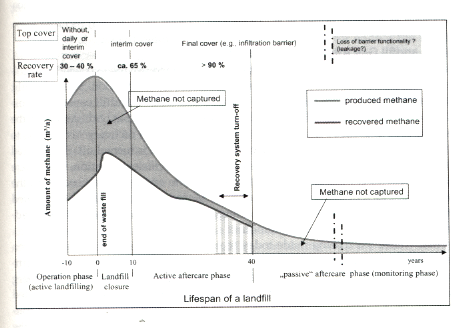
The fact is that nobody really knows for certain, because sanitary landfills filled with modern highly compacted waste have not been around long. At least, not enough for any to have been closed for more than about 40 years. All the work that has been done is theoretical and based on a forward projection on the experience of landfills which are nowhere near old enough to prove to us at what level the long period of low emissions with settle down to.
All estimates of the total proportion of the landfill gas which will escape in all the years before the landfill reverts to an aerobic condition may be wrong and the methane (greenhouse gas) which escapes may be larger than the current estimates.
It is already known that leachate emissions will emerge for considerably longer than the landfill gas, in particular with regard to parameters such as COD (chemical oxygen demand) and nitrogen compounds.
Investigations performed by Kruse (1994), Horing and Ehrig (1997) and Kriimpel-beck (1999) show that these parameters decrease very slowly over time. For this reason it is now recognised by most environmental regulatory bodies that leachate from MSW landfills will need provision to be treated for 100 to 200 years to comply with the stringent legal enforcements needed to protect the future water supplies of successive generations.
Leachate quality is rightly seen as the determining factor in establishing the time span of landfill aftercare, and it will be the leachate contaminants still present in the waste for which those charged with protecting the environment from landfills will have to wait the longest. Nevertheless, leachate can be collected quite easily at modern landfills with engineered techniques.
Landfill gas is far harder to capture, even using modern facilities and, because of the high greenhouse gas (methane) content of landfill gas. The resulting gas emissions are of paramount importance on a global scale. As things stand a significant and possibly quite large proportion of the landfill gas will escape. Escape takes place during and after each landfill ceases to produce landfill gas of a high enough volume and calorific value, for gas extraction for EfW power generation to continue. So far, there are no realistic landfill gas management plans among landfill site owners and regulatory authorities, for the care of the site needed to continue for as long as will be needed.
The EU landfill directive (Council Directive 1999/31/EC) stipulates in article 10 that landfill operators must ensure financial security for landfill closure and aftercare measures for a period of at least 30 years. This time-span is also often interpreted as the “active aftercare phase” for a landfill site, including gas epipeworkxtraction and treatment, leachate collection and disposal.
However, from a scientific and technical point of view, the real aftercare period will most probably last longer. A longer aftercare will be needed in order to achieve environmentally harmless emissions, most clearly regarding leachate quality. But, also it will be needed in respect of landfill gas.
For the landfill gas, under optimal decomposition conditions, the greater part of methane formation in the landfill may already have taken place within 30 years after landfill closure.
At first sight, compared to the amount of methane produced in the operational or landfill closure phase, the methane volume released in or even after the aftercare phase seems not to be particularly high.
However, the impact on greenhouse gas emissions will be likely to be seen as significant after the extraction of gas for energy production ceases, and yet the source of new revenue to fund the latter phase when gas extraction systems will most probably still be needed in continuous (or intermittent) operation, is absent. It will still be important to limit the greenhouse gas emissions by using flares, but hard to do so with flares forced to be running periodically and controlled by automatic gas monitoring and valve control. And, yet this period of landfill gas management requiring quite demanding care may continue for say another 70 years after the end of waste filling, perhaps longer.
In a study performed to investigate conditions present in many older landfills in Germany, Kriimpelbeck (1999) discovered that considerable methane emissions occur particularly in the transition period between active and passive aftercare measures, when active gas extraction, gas-utilization and/or flaring are no longer operating smoothly.
Moreover, the period of “unusable” methane formation may last from several decades up to 100 years, finally accumulating to provide an amount of gas which is consequently no longer negligible, particularly with respect to global warming.
The hunt is, as a result, now on for a passive method of methane oxygenation to replace flaring once the site can no longer be vented by landfill gas extraction wells. This is the new frontier of landfill gas management.
(This article is based upon a published paper ref: M. Huber-Humer; Dwindling Landfill Gas – Relevance and Aftercare Approaches; 2nd Boku Waste Conference 2007, Institute of Waste Management, BOKU.
REFERENCES
Kruse K. (1994). Langfristiges Emissionsgeschehen von Siedlungsabfalldeponien; Veroffen-tlichungen des Institutes fur Siedlungswasserwirtschaft TU Braunschweig, Heft 54.
Kriimpelbeck I. (1999). Untersuchungen zum langfristigen Verhalten von Siedlungsabfall¬deponien. Doctoral Thesis, Gesamthochschule Wuppertal.
Lechner P., Tesar M., Smidt E. (2006): Stabilisierungs- und Humifizierungsprozesse bei der Deponiebeluftung. Hamburger Berichte TU Hamburg-Harburg, Verlag Abfall aktuell.
Other Research Papers Available:
1. [simpleazon-link asin=”9282687813″ locale=”us”]Integral Management of Gas Produced in Controlled Landfills, Self-Generation[/simpleazon-link][simpleazon-link asin=”B00385R9AS” locale=”us”]Evaluation of landfill gas decay constant for municipal solid waste landfills operated as bioreactors.(Technical report): An article from: Journal of the Air & Waste Management Association[/simpleazon-link]
2. [simpleazon-link asin=”B000RR5WHC” locale=”us”]Methane mass balance at three landfill sites: What is the efficiency of capture by gas collection systems? [An article from: Waste Management][/simpleazon-link]
Landfill Gas Use and Origins
Landfill gas use is the collection and treatment of methane or other gaseous substances from the decomposition of waste in a landfill to create power, heat, and energy. In addition to fossil fuels and farming, municipal solid waste (MSW) landfill gas was third in the world as the contributor to methane emissions as a greenhouse […]
Landfill Methane Capture: The Global Warming Reduction “Quick Win” You've Never Heard Of
Concerned about the menacing effects of landfill gas on our environment? You're not alone, but it's not as bad as it might be where a landfill has a well-engineered Landfill Methane Capture system installed. In fact, we go so far as to say that landfill methane capture and utilisation is the global warming reduction “Quick […]
Fundamentals of Landfill Gas
Understanding the fundamentals of landfill gas is crucial for environmental researchers, waste management professionals, and many others engaged in addressing climate change. A natural byproduct of organic material decomposition in landfills, this flammable gas plays a substantial role in global warming due to its composition. While not odorous if well managed it is closely associated […]
Landfill Gas Flares – Selection Installation And Maintenance
Landfill gas flares are now destined to be installed in a lot more landfills globally after COP26. This article is intended to help the anticipated influx of industry newcomers with their Landfill Gas Flare selection, installation, and maintenance. One of the international pledges made during the UN International Climate Change Conference 2021 otherwise known as […]


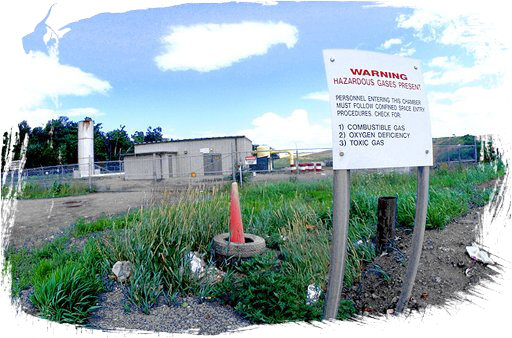

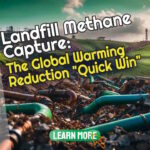
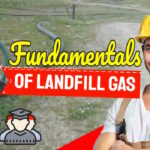

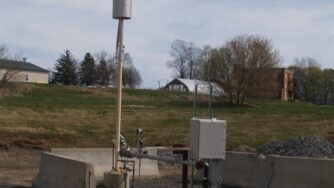
I don’t know whether it’s just me, but I think there will be danger to properties near landfills for much longer than the “experts” tell us. They have a vested interest in dismissing resident worries. Never forget. Thanks for writing.
Please give quote for a sub-slab depressurization. I look for price for system to direct soil vapor away from the building. Reply my email.
Very interesting landfill gas report and I would like to obtain a pdf copy. Thanks